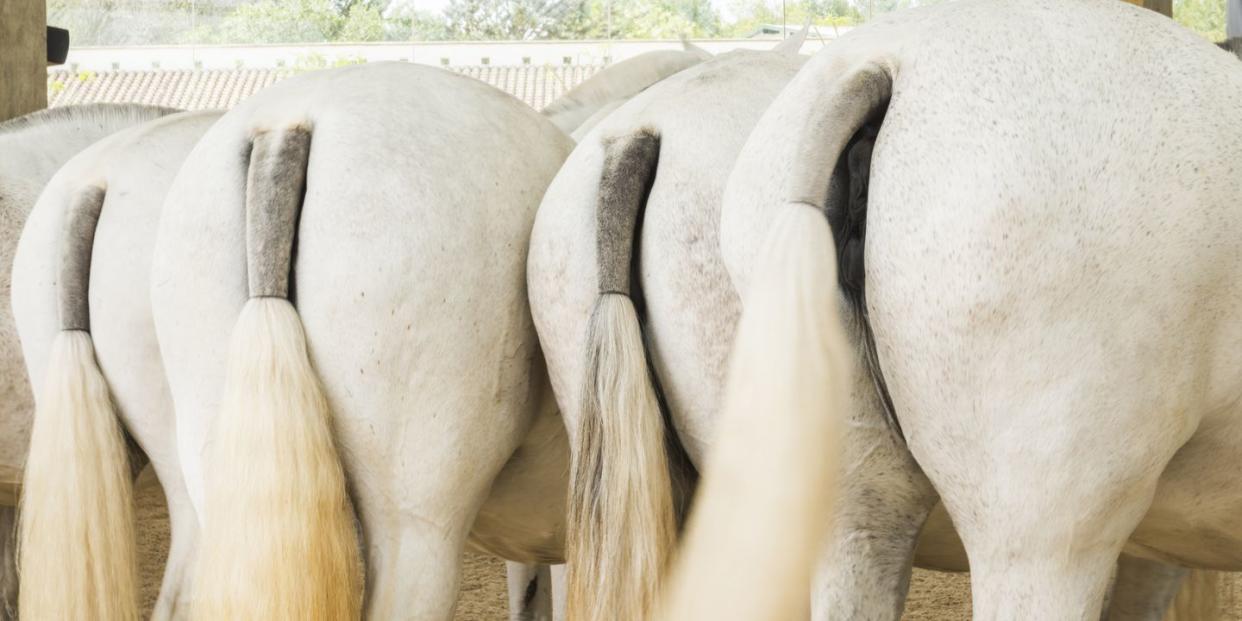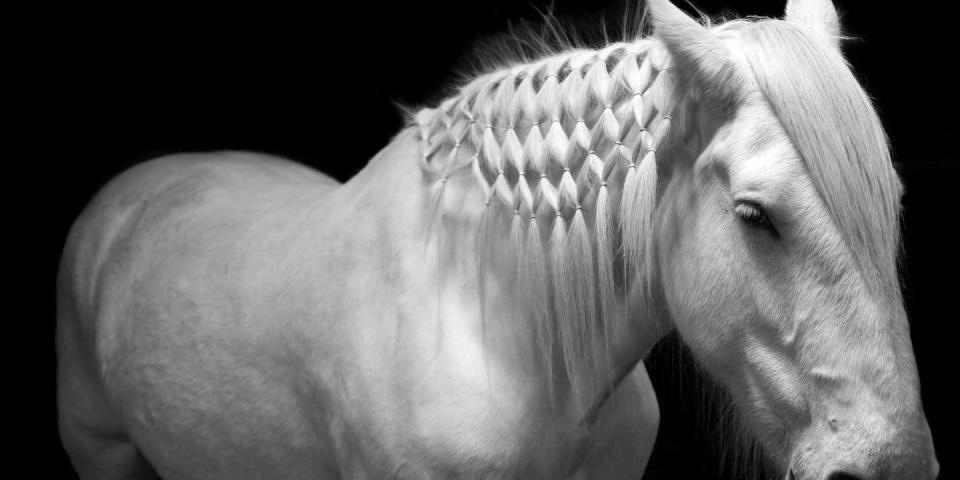Hair Extensions for Horses: A New Equestrian Trend

Purchasing a top-of-the-line horse for dressage, the most refined of the equestrian sports that is sometimes known as “horse ballet,” can run well into the six figures. One thing that kind of money doesn’t buy, however, is what’s considered many horses’ most luxurious feature-a robust tail. Indeed, to achieve the kind of coiffure considered key to the sport requires something more often found in a salon than a stable: hair extensions.
Known in the industry as “fake tails,” these pieces, just like the best hairpieces for humans, are made from real hair and braided into existing locks to add length and volume. In this case, the strands often come from retired show horses whose follicular fortitude no longer serves them. And if they’re not using it, why shouldn’t horses still in competition? “It’s better than the hair ending up in landfills,” says Barb Delf, who owns Blue Grass, Iowa’s Custom Tails. Her company offers tails, which can cost up to $600, in 26 different colors.

The process of applying a fake tail begins early on the day of a show. April Runcie, a veteran braider, says she will arrive at a stable at 4 AM to climb her stepladder, plait a horse’s mane, and braid in the extensions. It’s work that has given her achy hands and made her reluctant to style hair in her off hours. “My daughter once asked me to braid her hair,” she says. “She got a haircut instead.”
After a show, grooms undo the work and make sure the extensions are left clean on a bridle rack for the braiders, who’ll return the next morning to begin again. When traveling, the tails are protected in quilted-sometimes monogramed-bags.
Shanette Barth Cohen, executive director of the Hampton Classic, jokes that thanks to the process, horses are in some ways more pampered than people. “There is nothing like seeing a beautifully turned out horse,” she says. “And you can’t deny that braids are a great look.”
You Might Also Like
